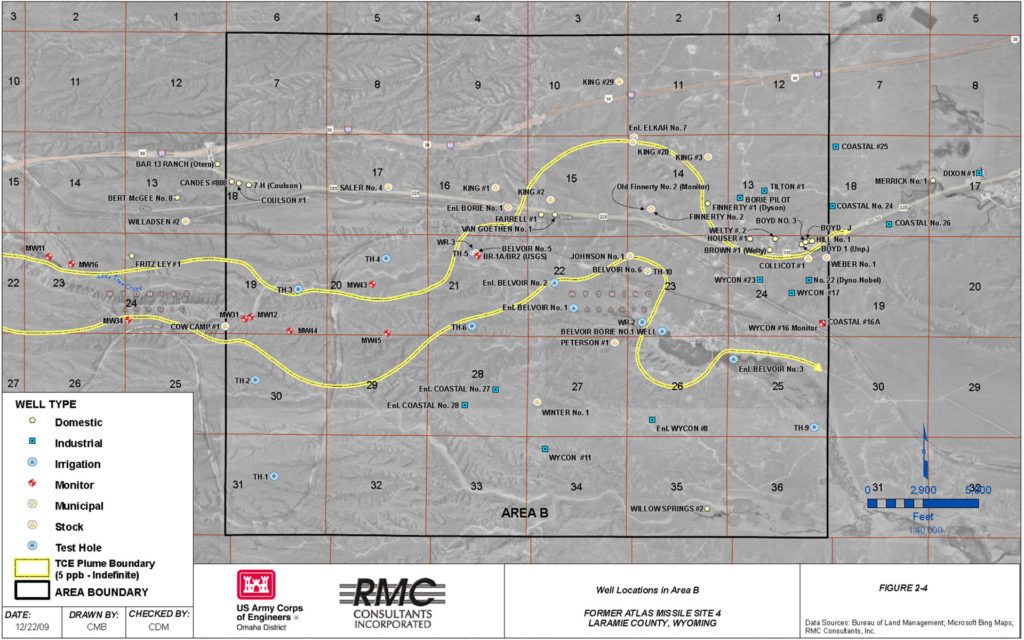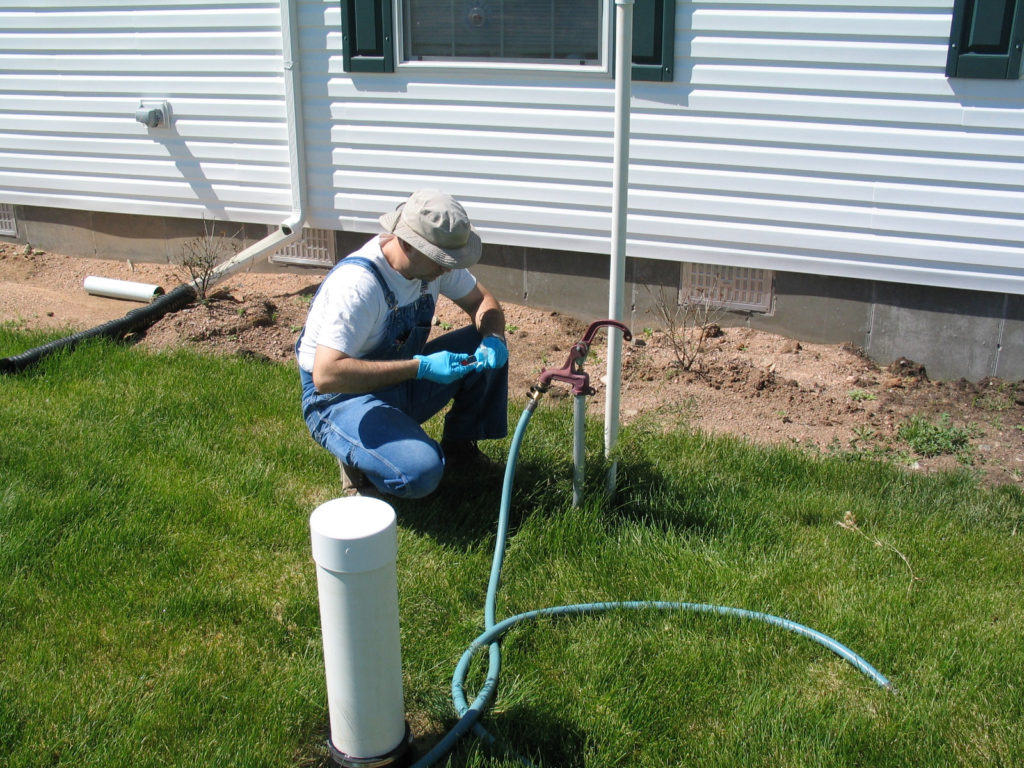The Ogallala and White River Formations dip gently downward from Area A (on the west) toward Area B (on the east), resulting in the water-table/potentiometric surface moving from within the White River Formation in Area A to within the overlying Ogallala Formation in Area B. The western edge of Area B marks the approximate line where the Ogallala Formation becomes saturated. Within Area B the uppermost water-bearing units include the lowermost units of the Ogallala Formation and uppermost layers of the White River Formation.

There are numerous wells of various types located in Area B, as described below:
- Seven Test Hole wells (TH-2 through TH-6, TH-9, and TH-10; TH-1 typically has very little water or is dry)
- Eleven USACE monitoring well locations, most with multiple screened intervals
- Six municipal water supply wells; two additional wells (Belvoir No. 5 and Belvoir No. 6) have been drilled but not yet brought on line
- Several stock wells operated by either submersible pumps or windmills
- Eleven industrial wells owned by Dyno Nobel
- A new two-well monitoring cluster installed by the USGS near TH-5 (BRO-1A and BRO-2)
- Several irrigation wells that discharge water to Lone Tree Creek
- Two deeper test wells (WR-2 and WR-3) installed as part of a study of the White River Formation
- Nine domestic (residential) wells
- A few miscellaneous/industrial wells
Most of the wells in this area are screened in the Ogallala Aquifer, except for a few wells completed deeper than 250 feet that penetrate the White River Formation (Saler No. 4 and Cow Camp #1 stock wells and the three domestic wells located near the west end of Otto Road: Cande’s#888, Coulson #1, and the “7H” well). All of these wells are all located close to the west edge of Area B.

Trichloroethylene (TCE) contamination ranging from non-detect to just over 50 milligrams per liter (mg/L) is present in the Ogallala Formation and upper White River Formation groundwater in Area B. Well locations in Area B and the outline of the TCE plume are shown in Figure 4. The yellow outline on the figure represents groundwater with 5 mg/L of TCE, which is the EPA’s drinking-water action level for TCE. The area within the yellow outline is the TCE contaminant plume. Unsaturated soils in Area B are not contaminated.